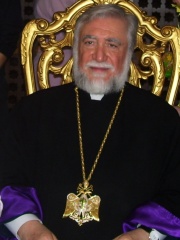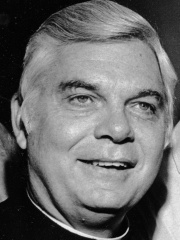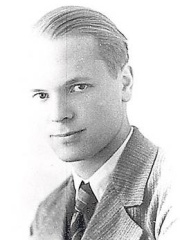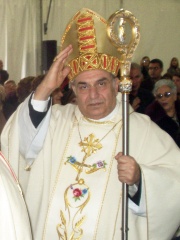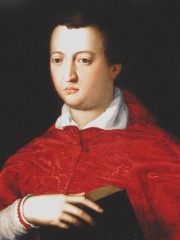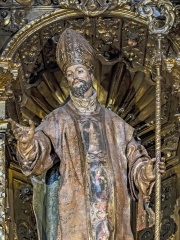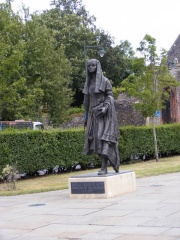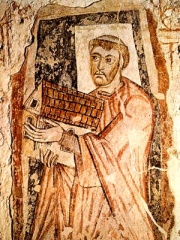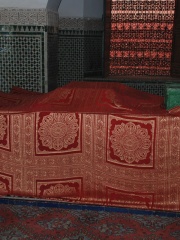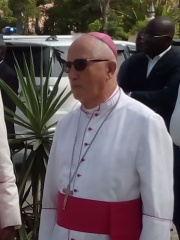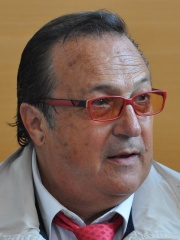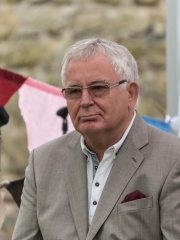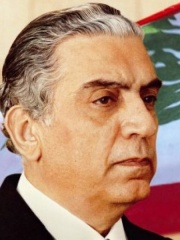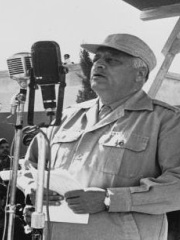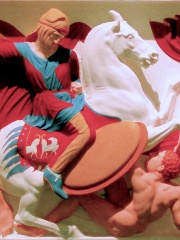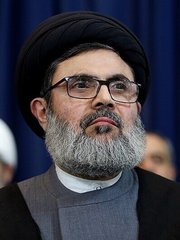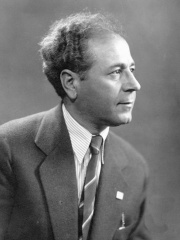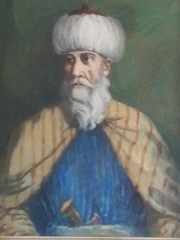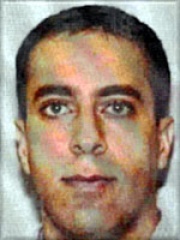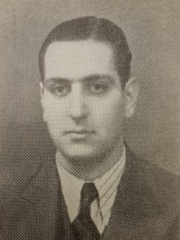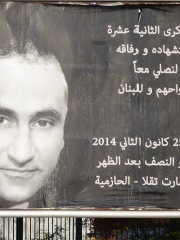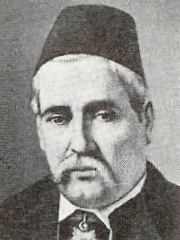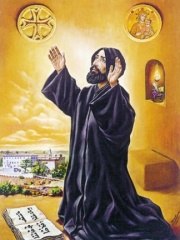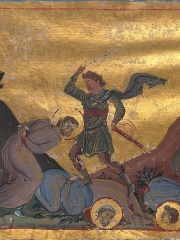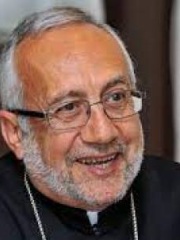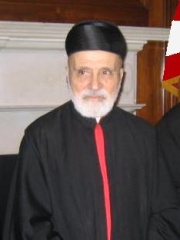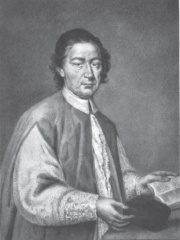RELIGIOUS FIGURE
Aram I
1947 - Today
 Aram I
Aram I
Aram I (Armenian: Արամ Ա; born Bedros Keshishian [Պետրոս Քեշիշեան] on 8 March 1947) has been the head of the Catholicosate of the Great House of Cilicia since 1995 and he resides in Antelias, Lebanon. Read more on Wikipedia
His biography is available in 19 different languages on Wikipedia. Aram I is the 2,081st most popular religious figure (up from 2,713th in 2024), the 80th most popular biography from Lebanon (up from 111th in 2019) and the 16th most popular Lebanese Religious Figure.
Memorability Metrics
Page views of Aram I by language
Among RELIGIOUS FIGURES
Among religious figures, Aram I ranks 2,081 out of 3,187. Before him are Bernard Francis Law, Maurice Bavaud, Paolo Romeo, Giovanni de' Medici, Pacian, and Eudoxius of Antioch. After him are Bertha of Kent, Laura Montoya, Benedict Biscop, Qadi Iyad, Eugenio Dal Corso, and Laurent-Joseph-Marius Imbert.
Most Popular Religious Figures in Wikipedia
Go to all RankingsBernard Francis Law
1931 - 2017
HPI: 60.30
Rank: 2,075
Maurice Bavaud
1916 - 1941
HPI: 60.30
Rank: 2,076
Paolo Romeo
1938 - Present
HPI: 60.30
Rank: 2,077
Giovanni de' Medici
1543 - 1562
HPI: 60.30
Rank: 2,078
Pacian
310 - 390
HPI: 60.28
Rank: 2,079
Eudoxius of Antioch
300 - 370
HPI: 60.27
Rank: 2,080
Aram I
1947 - Present
HPI: 60.27
Rank: 2,081
Bertha of Kent
550 - 601
HPI: 60.27
Rank: 2,082
Laura Montoya
1874 - 1949
HPI: 60.26
Rank: 2,083
Benedict Biscop
628 - 690
HPI: 60.25
Rank: 2,084
Qadi Iyad
1083 - 1149
HPI: 60.25
Rank: 2,085
Eugenio Dal Corso
1939 - 2024
HPI: 60.25
Rank: 2,086
Laurent-Joseph-Marius Imbert
1796 - 1839
HPI: 60.25
Rank: 2,087
Contemporaries
Among people born in 1947, Aram I ranks 310. Before him are Robertino Loreti, Ann Hui, Sammy Hagar, Aleksandr Viktorenko, Tiit Vähi, and Gunter Demnig. After him are László Fazekas, Gunnar Staalesen, Tim Matheson, Peter Senge, Gerry Rafferty, and Brian Herbert.
Others Born in 1947
Go to all RankingsRobertino Loreti
SINGER
1947 - Present
HPI: 60.32
Rank: 304
Ann Hui
FILM DIRECTOR
1947 - Present
HPI: 60.31
Rank: 305
Sammy Hagar
MUSICIAN
1947 - Present
HPI: 60.31
Rank: 306
Aleksandr Viktorenko
ASTRONAUT
1947 - 2023
HPI: 60.30
Rank: 307
Tiit Vähi
POLITICIAN
1947 - Present
HPI: 60.29
Rank: 308
Gunter Demnig
POLITICIAN
1947 - Present
HPI: 60.28
Rank: 309
Aram I
RELIGIOUS FIGURE
1947 - Present
HPI: 60.27
Rank: 310
László Fazekas
SOCCER PLAYER
1947 - Present
HPI: 60.11
Rank: 311
Gunnar Staalesen
WRITER
1947 - Present
HPI: 60.07
Rank: 312
Tim Matheson
ACTOR
1947 - Present
HPI: 60.05
Rank: 313
Peter Senge
ECONOMIST
1947 - Present
HPI: 60.03
Rank: 314
Gerry Rafferty
MUSICIAN
1947 - 2011
HPI: 60.03
Rank: 315
Brian Herbert
WRITER
1947 - Present
HPI: 60.03
Rank: 316
In Lebanon
Among people born in Lebanon, Aram I ranks 80 out of 145. Before him are Élias Sarkis (1924), Ahmad Shukeiri (1908), Gabriel Yared (1949), Abdalonymus (-305), Hashem Safieddine (1964), and Antoun Saadeh (1904). After him are Fakhr al-Din II (1572), Ziad Jarrah (1975), Charles Helou (1913), Nancy Ajram (1983), Elie Hobeika (1956), and Butrus al-Bustani (1819).
Others born in Lebanon
Go to all RankingsÉlias Sarkis
POLITICIAN
1924 - 1985
HPI: 61.13
Rank: 74
Ahmad Shukeiri
POLITICIAN
1908 - 1980
HPI: 61.11
Rank: 75
Gabriel Yared
COMPOSER
1949 - Present
HPI: 60.96
Rank: 76
Abdalonymus
POLITICIAN
305 BC - Present
HPI: 60.83
Rank: 77
Hashem Safieddine
RELIGIOUS FIGURE
1964 - 2024
HPI: 60.69
Rank: 78
Antoun Saadeh
PHILOSOPHER
1904 - 1949
HPI: 60.46
Rank: 79
Aram I
RELIGIOUS FIGURE
1947 - Present
HPI: 60.27
Rank: 80
Fakhr al-Din II
POLITICIAN
1572 - 1635
HPI: 60.22
Rank: 81
Ziad Jarrah
EXTREMIST
1975 - 2001
HPI: 60.18
Rank: 82
Charles Helou
POLITICIAN
1913 - 2001
HPI: 60.04
Rank: 83
Nancy Ajram
SINGER
1983 - Present
HPI: 59.77
Rank: 84
Elie Hobeika
POLITICIAN
1956 - 2002
HPI: 59.64
Rank: 85
Butrus al-Bustani
WRITER
1819 - 1883
HPI: 59.58
Rank: 86
Among RELIGIOUS FIGURES In Lebanon
Among religious figures born in Lebanon, Aram I ranks 16. Before him are Nimatullah Kassab (1808), Pamphilus of Caesarea (240), Raphaël Bedros XXI Minassian (1946), Nasrallah Boutros Sfeir (1920), Abd al-Rahman al-Awza'i (707), and Hashem Safieddine (1964). After him are Giuseppe Simone Assemani (1686), Anthony Peter Khoraish (1907), and Aïda Yazbeck (null).
Nimatullah Kassab
1808 - 1858
HPI: 66.26
Rank: 10
Pamphilus of Caesarea
240 - 309
HPI: 64.79
Rank: 11
Raphaël Bedros XXI Minassian
1946 - Present
HPI: 63.18
Rank: 12
Nasrallah Boutros Sfeir
1920 - 2019
HPI: 62.29
Rank: 13
Abd al-Rahman al-Awza'i
707 - 774
HPI: 62.04
Rank: 14
Hashem Safieddine
1964 - 2024
HPI: 60.69
Rank: 15
Aram I
1947 - Present
HPI: 60.27
Rank: 16
Giuseppe Simone Assemani
1686 - 1768
HPI: 57.17
Rank: 17
Anthony Peter Khoraish
1907 - 1994
HPI: 55.84
Rank: 18
Aïda Yazbeck
HPI: 34.76
Rank: 19
